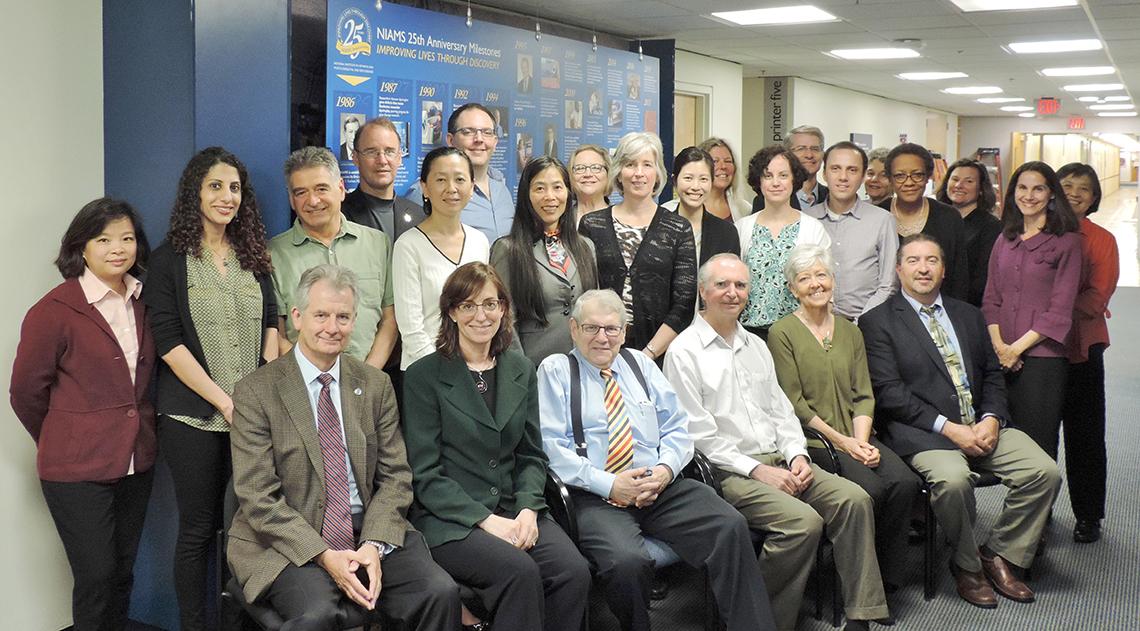Researchers Discuss Next Steps for Studying Hard-to-Treat Joint Tissue

Photo: Rich Clark
Basic researchers, tissue engineers and orthopaedic surgeons recently met with NIAMS leadership and staff to discuss approaches for repairing injured or degenerated entheses.
An enthesis is a region where a tendon or ligament inserts into bone. Despite the many scientific discoveries that are illuminating the intracellular pathways and signaling molecules that contribute to tendon and ligament maintenance and healing, reattaching connective tissue to bone remains challenging. Preclinical advances in the field of regenerative medicine have enlisted scaffold technology, cell therapy and delivery of growth factors to re-establish the bone-tendon or bone-ligament interface, but few have been rigorously tested in patients.
Discussion focused on ways to address knowledge gaps that limit current treatment approaches to these injuries, to accelerate translation of basic findings to clinical interventions and to better understand and optimize therapies already in clinical use.
